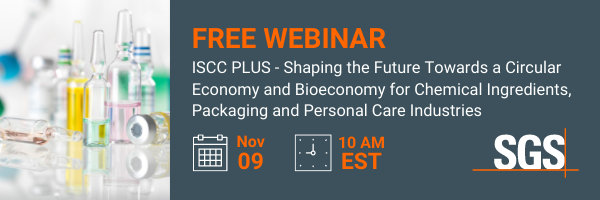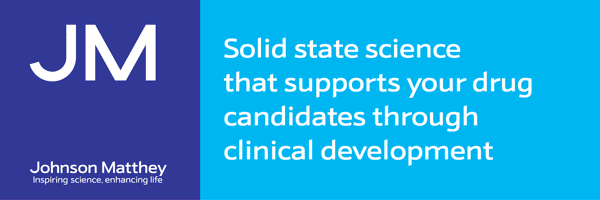Regulations & EHS&S
A lot can happen in a year: 2017 in review 1st December 2017
By our Editorial Team
We look at the ups and downs of 2017, as we consider the year in review. Politics and regulatio

We look at the ups and downs of 2017, as we consider the year in review.
Politics and regulations
As Donald Trump took office as the 45th President of the United States, the pharma industry was still reeling from his comments (the previous week) about “getting away with murder” and his promises to subjugate drug manufacturers with “the power of the tweet”. His claim that Medicare could save $300 billion a year by negotiating drug prices, and insistence that he didn’t care whether his demands sent stocks into a high dive, did not give US pharma an auspicious start to 2017. Yet within a matter of weeks, in a meeting with industry leaders, President Trump said he wanted to knock down regulations, speed up Food and Drug Administration (FDA) approvals, change tax codes, reduce prices and move manufacturing back to the US. Many top executives started to say that the President’s proposals could amplify industry growth.
At the same time, on the other side of the Atlantic, British Prime Minister Teresa May announced plans to leave the EU’s single market as part of a ‘hard Brexit’, yet referenced chemicals and pharma as key sectors where she believed it would be in the UK and EU’s best interests to minimize disruption to trade and investment. But after signing Article 50 in March to initiate the exit, Britain became the ‘bad boy’ of Europe, as disagreements broke out over refusals to discuss trade agreements before the ‘divorce’ was settled. Nine months later, little progress appears to have been made, and concerns are growing over the uncertain future of British trade.
Trade bodies in the UK have also been asking questions about ownership of REACH data post-Brexit. While hoping for greater support from government, and for a ‘good’ deal with Europe, companies in the UK are preparing themselves for whatever Brexit may bring. On a more optimistic note, it has been suggested that Brexit may be the trigger that the UK’s chemicals industry needs to re-think the ways in which it operates, for example to provide more innovative approaches to R&D, and to develop more efficient business models. With the UK’s existing technology base, capitalization on areas in which chemical companies can show strengths and expertise may translate into significant economic success.
The final REACH deadline is now less than 9 months away, as May 31st saw the final deadline for pre-registration and many people’s attention turned to challenges beyond May 2018. Clearly, there is a vast industry beyond Europe, and an increasing number of challenges are emerging as countries introduce new or more stringent notification and registration schemes. For example, China’s new regulations on pesticide administration came into effect on 1st June this year, with important impacts on manufacturers, importers and distributors working in – or with – the Chinese agrochemicals industry.
In July, the FDA acknowledged that some pharma manufacturers had not yet installed the technologies required to comply with US Drug Supply Chain Security Act (DSCSA) Serialization Enforcement, and as a result the deadline for compliance was pushed back a full year, to 26th November 2018.
Big business
DCAT’s Patricia van Arnum predicted in January 2017 that the global pharmaceutical industry would see positive growth at moderate levels in 2017. By the 3rd quarter of this year, that prediction was holding true as, on the other side of the Atlantic, the UK’s Chemicals Industries Association’s economic outlook in August reported that “global growth is on track for modest improvements in 2017 [3.5%] and 2018 [3.6%].”
The number of new facilities and expansions that have been reported this year have been overwhelming, and they are too numerous to mention here. Let it simply be noted that the industry appears to go strength to strength, and the specialty chemicals industry continues to thrive.
Of ‘mega-mergers, ChemChina completed its $43 billion takeover of Swiss giant Syngenta at the end of June, about 16 months after its offer was made, and DuPont announced the completion of its $130-billion merger with Dow Chemical Co on 1st September (the deal was first announced in December 2015) to form ‘DowDuPont’.
In February Bayer‘s CEO repeated that he was confident the long-awaiting $66 billion merger with Monsanto would close by end of the year. However, a deal with BASF to acquire significant parts of Bayer’s seed and non-selective herbicide businesses (for an all-cash price of €5.9 billion), which Bayer needs to divest in the context of its planned acquisition of Monsanto, was only signed in October, making it clear that an end-of-2017 goal for completion would not be achieved.
Some of the biggest deals in the pharma industry this year were Johnson and Johnson‘s $30 billion acquisition of Actelion, Gilead’s $11.9 billion acquisition of Kite Pharma, Thermo Fisher Scientific’s $7.2 billion acquisition of Patheon, Lonza’s $5.5 billion acquisition of Capsugel, Takeda Pharmaceuticals’ $5.1 billion acquisition of Ariad Pharmaceuticals, Allergan’s $2.4 billion acquisition of Zeltiq Aesthetics, Bristol-Myers Squibb’s $2.3 billion plan to buy IFM Therapeutics (IFM), Catalent‘s plan to acquire Cook Pharmica for $950 million, and Sanofi’s $750 million acquisition of Connecticut-based flu vaccine maker Protein Sciences. Also topping the headlines towards the end of the year were plans by Amneal Pharmaceuticals and Impax Laboratories to merge, creating the fifth largest generic-drug company in the US, with combined 2017 revenues of up to $1.85 billion.
Harvey, Irma and Maria
Deserving of a section of its own in this review, the full impact of Hurricanes Harvey, Irma and Maria in August and September this year will be felt for a while yet. Wreaking devastation across the Caribbean and southeast US, Harvey and Irma were estimated to have caused up to $200 billion in damage to Texas and Florida. A major industry impact was reported to be a fall in crude oil production, refinery demand and exports. A variety of midstream companies also reported damage, although in most cases operations soon restarted. Puerto Rico was hit hardest by Hurricane Maria, which affected the country’s substantial pharmaceutical manufacturing base, and cost up to $95 billion in damages, according to some estimates.
The US FDA responded with a ‘Hurricane Relief Effort’ that prioritized actions such as providing recommendations on how to handle food and medical products that may have been impacted by the storms (including those in Puerto Rico), working with industry to assess damage and impact to facilities, to avoid – where possible – food and crop loss, and coordinating solutions to prevent shortages of life-saving therapies.
Sustainable innovation
Much of this year’s innovation has been driven by sustainability. A trend for developing ‘greener’ alternatives for conventional ingredients or additives has continued, demand for natural cosmetics is still steadily on the rise, and biological pesticides are gaining dominance in the agrochemical sector, while ‘soil correctors’ increase yields and optimize water usage as scientists uncover the mysteries of our natural soil biomes.
An interesting collaborative project by BASF and bse Engineering is enabling economically-viable transformation of excess current and off-gas CO2 into chemical energy story methanol in small-scale delocalized production units. This is a great step forward in sustainability, circular economy and increased efficiency of renewable energies. What’s not to like?
Some of this year’s top bio-alternatives that caught our attention included Biotensidon’s cost-effective mass production of rhamnolipids (biosurfactants); Emery Oleochemicals’ Emerox azelaic acid as an alternative to sebacic acid, and Edenol azelaic acid derivative as a substitute for dioctyl sebacate (DOS); Reverdia’s range of biosuccinium-based polyurethanes; BASF’s new clearcoat that uses biobased hardener Desmodur eco N 7300; and Clariant’s renewable-based neutralizing agent Genamin Gluco 50, as well as its GlucoPure Sense, a unique label-free surfactant based on 100% renewable sunflower oil. Also this year, Avalon Industries launched a research project to replace formaldehyde with bio-based, non-toxic 5-HMF (5-hydroxymethylfurfural), and we will be looking for the results of that project over the next year.
For natural beauty, Evonik launched functional additive SIPERNAT 11 PC to substitute microplastics; Lonza’s new Polyaldo polyglyceryl esters range includes naturally derived alternatives; Wacker’s BELSIL DM 5700 E contains nonionic surfactants based on renewable raw materials; and Green Biologics has been collaborating with Jungbunzlauer Ladenburg on bio-based plasticizers for use in personal care, healthcare, bio-polymers and other applications. Botaneco, a US-based natural ingredient company, opened a new laboratory in New Jersey to formulate sustainable ingredients derived from oilseeds, such as oleosomes, for the personal care industry.
Yet despite this focus on sustainability on the product side, a report by CDP (a not-for-profit organization that runs the global disclosure system for companies and other entities to manage environmental impacts) revealed in October 2017 that many chemical companies are struggling to meet the Paris Agreement goals. CDP highlighted AkzoNobel, Johnson Matthey and DSM as ‘best performing’ on climate-related metrics, and warned that long-term investors will increasingly look for all chemical companies to adjust their business strategies in line with more ambitious emissions reduction targets and a rise in carbon pricing schemes globally.”
To conclude…
This has been a difficult year in many ways, and perhaps it is remarkable that continued growth has been achieved. Testament to the commitment and inventive mindset of the people that we work with, the specialty chemicals industry appears robust and secure.
A recent (August 2017) survey by Deloitte of 160 Chief Financial Officers revealed lowering perceptions of own-company prospects and expectations about the economy. Only 45% expected better economic conditions in a year, and there was little optimism about their own prospects into 2018. US political turmoil, geopolitical risks, global economic and talent concerns topped the list of external risks, along with escalating worries about technology disruption and managing technological change.
Nevertheless, the Organization for Economic Co-operation and Development (OECD) projects continued growth of 3.7% in 2018, with industrial production and trade picking up, and further acceleration in the rebound of technology spending. As you might expect, there is likely to be a bias for greater growth in emerging economies, compared with the US and Europe, but – as a global industry that is at the forefront of technological change – specialty chemicals remains a good place to be.



